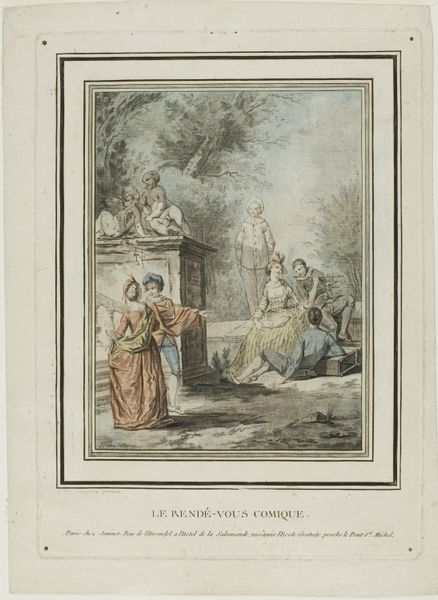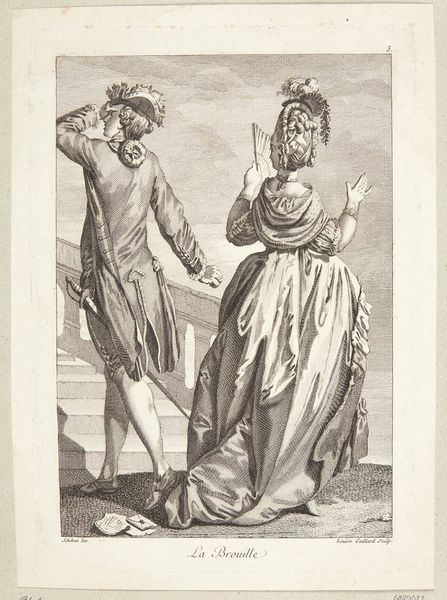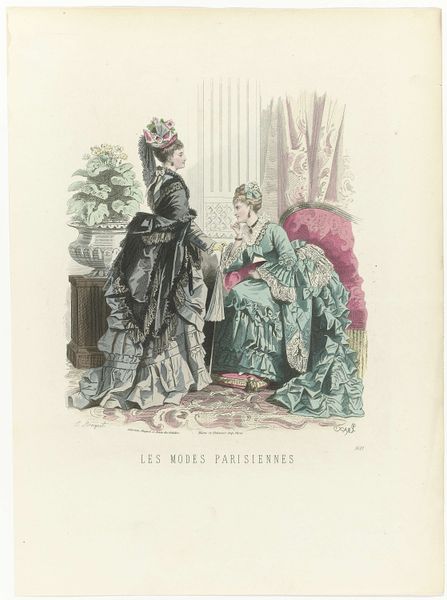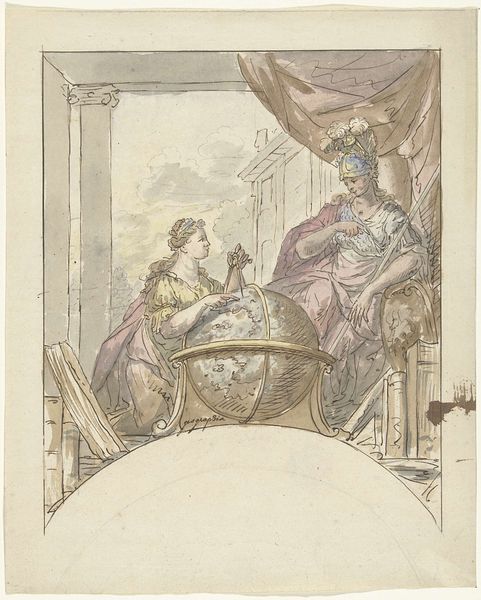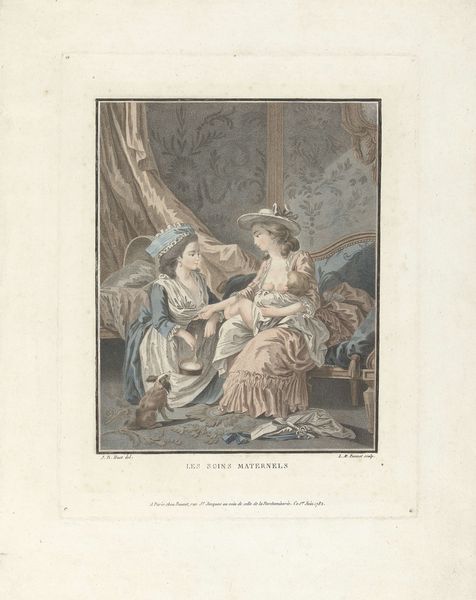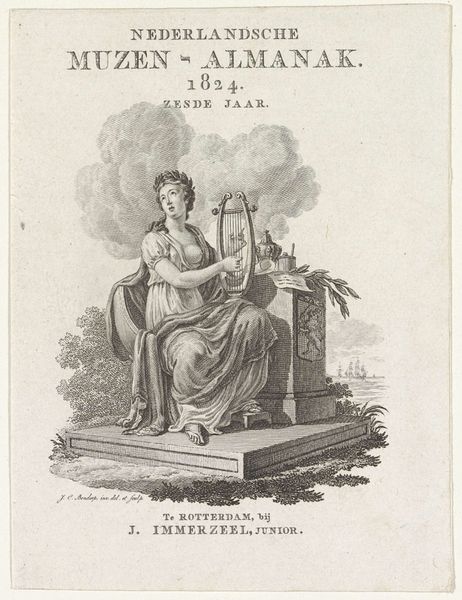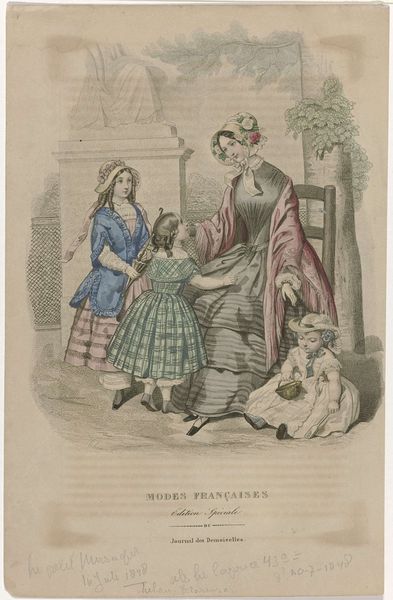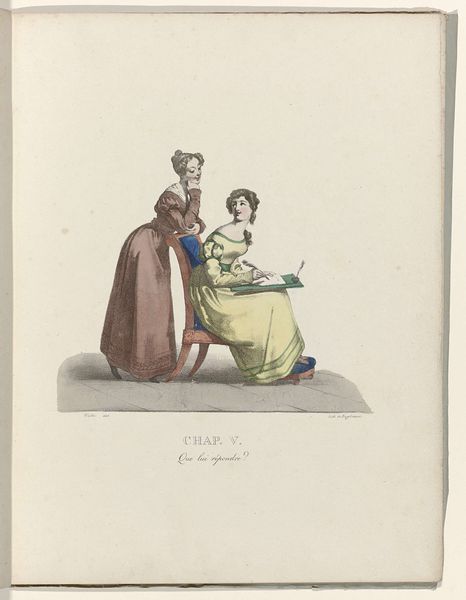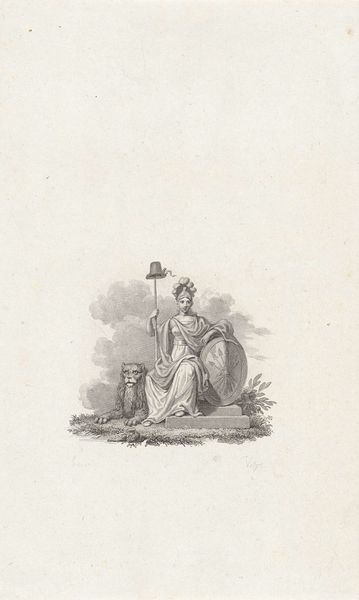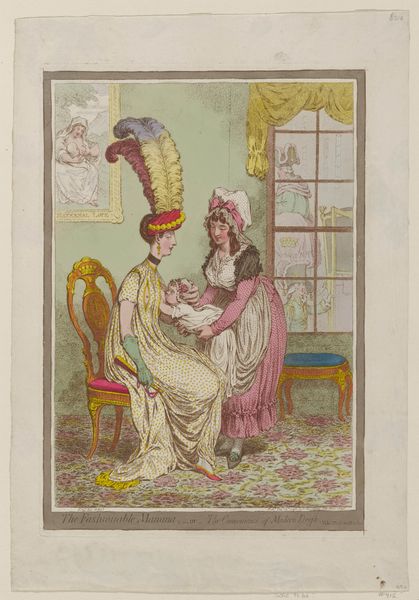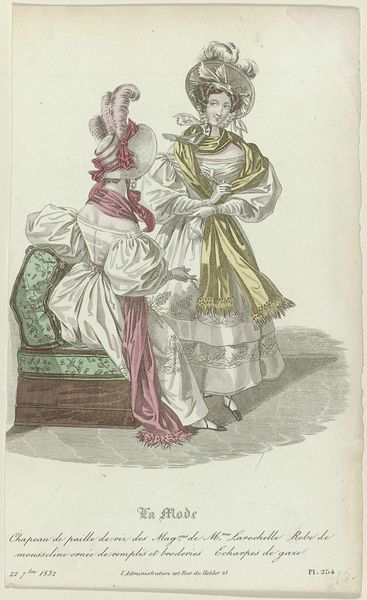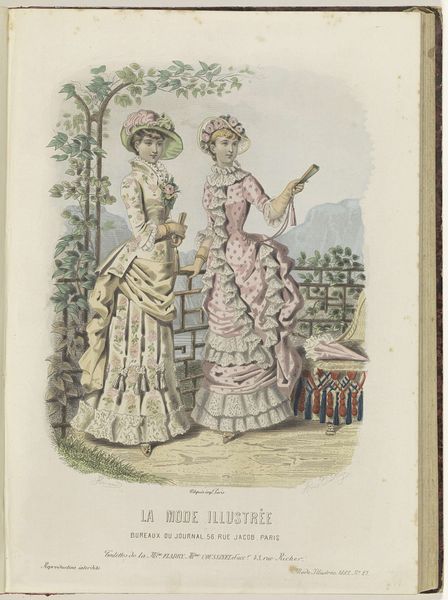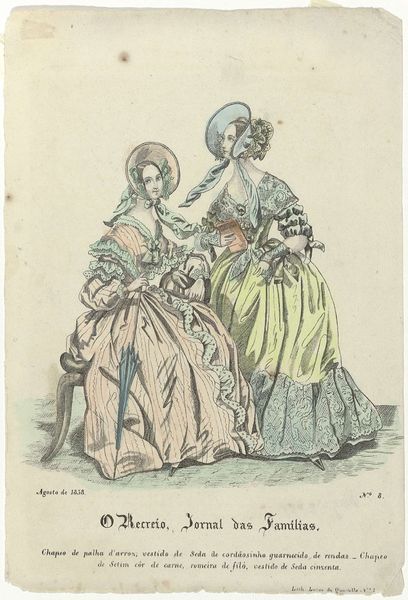
drawing, print, engraving
#
portrait
#
drawing
#
allegory
# print
#
historical fashion
#
romanticism
#
orientalism
#
genre-painting
#
nude
#
engraving
Dimensions: height 224 mm, width 153 mm
Copyright: Rijks Museum: Open Domain
Curator: This engraving from 1802, "Bewoners van het eiland Otaheite (Tahiti)", attributed to Ludwig Gottlieb Portman, really speaks volumes about the European gaze. Editor: Immediately, I'm struck by the textures—the stiff drapery, the fuzzy hair, and what look like floral…ornaments? They look completely artificial against the implied warmth of the setting. Curator: Precisely! The piece falls into a long history of representing the "exotic other." Tahiti, a point of great interest for Europeans at the time, and you can really see the idealization, the romanticization. Think about the role these images played in constructing European identity. Editor: It is interesting the ways labor and production factor in—how do these Tahitian “inhabitants” construct identity, dress, and their material existence in this exotic representation and in their lived reality? What type of consumption of images is promoted? Curator: I agree. Looking closer, you can see the layers of appropriation. The classicizing drapery combined with those 'floral ornaments' – it's a strange melange reflecting Western expectations. It attempts to represent Tahiti but also completely transforms it for a European audience. Editor: Those flower elements strike me as odd—they feel stuck on rather than integrated into the figure’s person, like cheap costume pieces rather than part of genuine cultural expression. How does this manufactured material presentation affect its perception, beyond the intent? Curator: The creation and circulation of images such as this had real impacts. It fed colonial fantasies, shaped public understanding and supported imperial power. Editor: The medium, an engraving, also makes the original drawing's lines—its marks of making—easily replicable. A reproducible fiction distributed for wide consumption. Did Portman visit Tahiti? Or are the forms based on third hand sources, mediated through many forms of circulation and fabrication? Curator: I would venture that he did not actually ever visit, relying mostly on earlier accounts and interpretations. The composition and styling are entirely based on romantic idealism than careful study of place and material culture. Editor: It brings up essential questions about the translation and transmutation of place and materials across cultural boundaries—questions of labor, resource extraction, representation, and who controls those narratives. Curator: Absolutely. The layers of representation are so thick and tangled. This work underscores how cultural narratives can easily transform and distort actual experience, perpetuating existing biases. Editor: In the end, analyzing the tangible, material decisions allows us a clearer perception of the intricate systems that create not only art but also broader, pervasive forms of belief. Thank you! Curator: Thanks! Looking through this historical context provides more nuanced look into art history and its relation to our shared cultures.
Comments
No comments
Be the first to comment and join the conversation on the ultimate creative platform.
